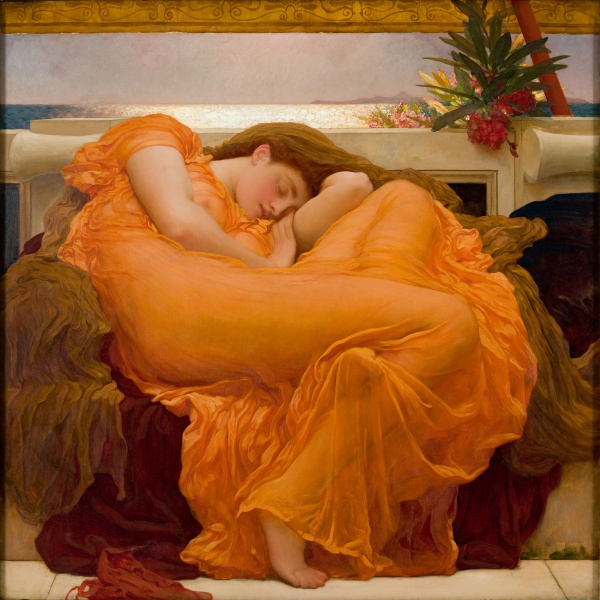Facts About Flaming June
"Flaming June" is one of Sir Frederic Leighton's most celebrated paintings, completed in 1895. This exquisite oil painting, created on a 47-by-47-inch canvas, epitomizes Leighton's classicist style. It features a woman believed to represent sleeping nymphs and naiads often depicted in Greek sculpture.
The painting disappeared in the early 1900s but made a surprising reappearance in the 1960s. Initially, it failed to sell at auction despite a modest reserve price of $140. Eventually, it was acquired by the Museo de Arte de Ponce in Ponce, Puerto Rico, where it resides today.
The concept for "Flaming June" originated from a motif Leighton initially intended for another piece called "Summer Slumber." The pose, inspired by Michelangelo's statue "Night" was difficult for Leighton to execute. Notably, he included a branch of toxic oleander in one corner, perhaps symbolizing the delicate boundary between sleep and death.
"Flaming June" is celebrated for its realism, vibrant hues, and Leighton's meticulous attention to detail. The transparent fabric draped over the woman, the rich colors, and the play of natural light underscore Leighton’s extraordinary skill.
The painting has an intriguing history. It was once owned by The Graphic magazine and was rediscovered in a home in Battersea during the 1960s. Luis A. Ferré purchased it for the Museo de Arte de Ponce. Since then, "Flaming June" has been showcased in various prestigious exhibitions around the world, including at the Museo del Prado in Madrid and the Frick Collection in New York City.
There is also some mystery surrounding the identity of the model. Some speculate it could be Dorothy Dene or Mary Lloyd, both favorite models of Leighton in the 1890s. Mary Lloyd, who posed for Leighton dressed in her head and hands but nude in other parts, is a strong candidate for the face seen in "Flaming June."
